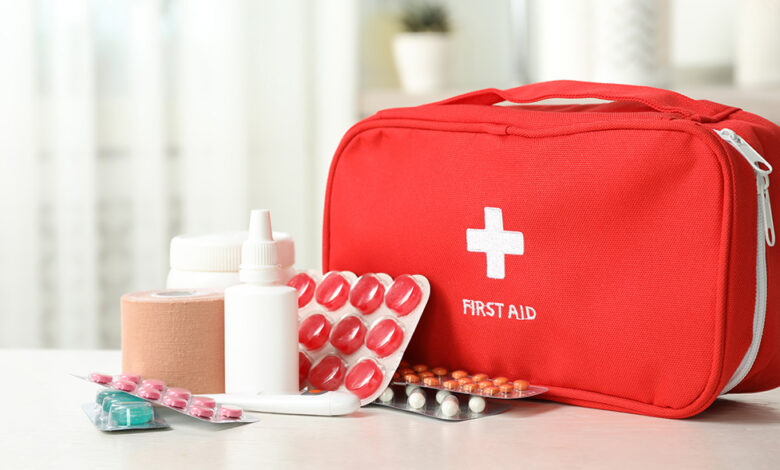What to Include in a Travel First Aid Kit: A Checklist for All Ages

Travel opens the door to new experiences and adventures, but it can also bring unexpected challenges—especially when it comes to health and safety. Whether you’re taking a family road trip, backpacking overseas, or going on a weekend getaway, having a well-stocked first aid kit is an important part of being prepared. Different locations and activities carry varying degrees of risk, and minor injuries or sudden illnesses can happen without warning. By assembling a travel first aid kit that meets the needs of adults, children, and seniors alike, you ensure a smoother, more confident journey.
Be ready for minor injuries and common health issues
A travel first aid kit should include supplies that handle cuts, scrapes, burns, stings, fevers, allergies, upset stomachs, and motion sickness. Items should suit all age groups and be adaptable to different climates and activities. From adhesive bandages to digital thermometers and medications, your kit should support both urgent care and comfort during unpredictable moments.
See also: Lake Water Treatments: Essential Solutions for Clean, Healthy Lakes
Tailoring Your First Aid Kit for Age and Destination
One of the most important aspects of packing a travel first aid kit is customizing it for the people you’re traveling with and the places you’re visiting. A family with young children, for example, needs to account for smaller bandages, child-appropriate pain relievers, and age-specific fever reducers like acetaminophen or ibuprofen in liquid or chewable forms. On the other hand, seniors might need medications for chronic conditions, pill organizers, or blood pressure monitoring devices. Where you’re going also matters. If the trip includes hiking, camping, or remote travel, your kit should prioritize wound care, insect protection, and items that support hydration and blister prevention. Urban travelers or international visitors should consider the availability of local healthcare and whether additional prescription copies or documentation are necessary. Travelers to hot, humid climates might include antifungal powder, while those visiting colder regions may pack warming ointments and moisturizers to prevent cracked skin. Some travelers choose to supplement their kits with skills through first aid and cpr training to ensure they know how to use the items in a real-life situation. Understanding what to bring is only part of preparation—knowing how to respond makes the kit much more useful during actual emergencies.
Essential Items for Cuts, Scrapes, and Wounds
No matter the destination or group, wound care is a must-have component of any travel first aid kit. Even a minor scrape can become problematic if not treated properly in unfamiliar environments. Adhesive bandages in multiple sizes, gauze pads, antiseptic wipes, and adhesive tape are standard. It’s also useful to include antibiotic ointment to prevent infection and a pair of disposable gloves to safely assist others. Tweezers for splinter removal and scissors for trimming gauze or cutting clothing are simple but valuable tools. For families with active children, consider adding a spray antiseptic, which can be applied quickly without touching the skin. Including alcohol pads ensures clean application surfaces, while a small bottle of saline solution can help flush debris from eyes or wounds. Liquid bandages are helpful for cuts on fingers or joints where movement might loosen traditional bandages. Having these items on hand not only prevents infection but also reduces discomfort, making travel disruptions less likely and recovery more manageable.
Managing Stomach, Motion, and Allergy Discomforts
Digestive upsets and allergic reactions are two of the most common health issues travelers face. Food unfamiliarity, new environments, and changes in schedule can contribute to nausea, bloating, or diarrhea. To prepare, include antacids, anti-diarrheal tablets, oral rehydration salts, and gentle laxatives if needed. For children, make sure dosage forms are age-appropriate and clearly labeled. Motion sickness is another concern, particularly for long car rides, boat trips, or air travel. Packing motion sickness bands or medications like dimenhydrinate can provide quick relief. For allergies, antihistamines in both oral and topical forms are essential, especially in nature-heavy settings or when trying unfamiliar foods. If you or a family member has a known allergy, carrying an epinephrine auto-injector and a copy of the allergy action plan is important. A digital thermometer is a helpful tool to assess fever accurately, and cold packs—either instant or freezable—can help reduce swelling or cool a person down during heat-related discomfort.
Pain Relief and Medication Organization for All Ages
Managing pain and existing conditions during travel requires careful planning. Pain relief options such as ibuprofen or acetaminophen should be available in both adult and child forms, clearly marked with dosage instructions. Topical creams or gels for sore muscles, arthritis, or insect bites add another layer of comfort. Travelers with chronic conditions should carry extra medication in case of delays, packed in original containers to avoid confusion during border crossings. A simple chart or logbook helps keep track of doses, especially for seniors or caregivers managing multiple prescriptions. Including spare batteries for medical devices such as hearing aids, glucose monitors, or digital thermometers adds another level of security. A compact pill organizer labeled by day can reduce confusion and ensure adherence to routines. While these preparations seem small, they have a meaningful impact on maintaining good health and comfort during extended trips or unplanned interruptions.
Storage Tips and Travel-Ready Packaging
Packing a travel first aid kit isn’t just about the contents—it’s also about how the items are stored. A durable, waterproof pouch with multiple compartments helps keep everything organized and easy to access. Labeling the sections or using color-coded bags for categories like medications, wound care, and tools helps locate items quickly, especially in urgent situations. Transparent bags work well for airport screening and help visualize contents at a glance. Temperature-sensitive items, such as some medications, should be kept in insulated containers if traveling in hot or cold climates. Make sure to check expiration dates before packing and replace anything that’s expired. If traveling by air, be mindful of liquid limits and carry essential items in your hand luggage in case of lost checked baggage. A printed first aid guide or instruction sheet can be helpful for those unfamiliar with procedures, particularly in high-stress moments. Compactness and accessibility are crucial, but nothing should be sacrificed if it compromises care.
Conclusion
Creating a travel first aid kit that suits all ages and destinations requires thoughtful planning and regular updating. The goal is to manage minor health issues independently and respond effectively to unexpected situations without relying entirely on nearby services. When tailored for children, adults, and seniors, the kit becomes a practical resource that can reduce discomfort, prevent complications, and bring peace of mind. Including essentials for wound care, stomach relief, allergies, and pain management ensures you’re prepared for common incidents. With organized storage and the right mindset, your travel first aid kit becomes a reliable companion for every journey.







